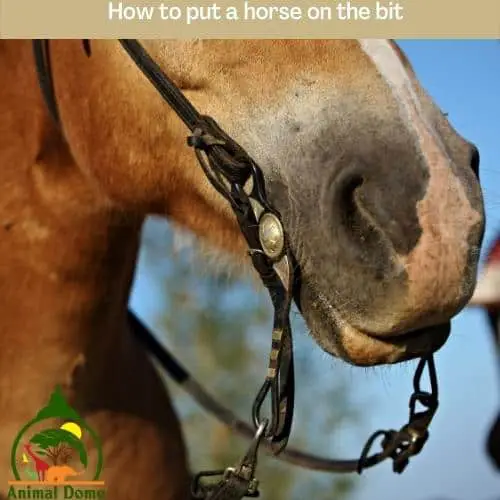There’s nothing more frustrating than being in the middle of a ride and having your horse start to buck and run through the bit. Not only is it dangerous, but it can also be really hard on your horse’s mouth. So how can you stop this from happening?
There are a few things you can do to help stop your horse from running through the bit. First, be sure that you’re using a bit that is appropriate for your horse’s size and temperament. You may also need to adjust your position in the saddle, and use a stronger rein signal. You may need to apply some form of discipline, like a slap on the shoulder or a sharp pull on the reins.
In this article, we will discuss some methods that you can use to help stop your horse from running through the bit. Hopefully, by following these tips, you can help your horse learn to carry himself correctly and perform at his best. Let’s get started!
What does it mean when a horse runs through the bit?
A horse running through the bit means that he is not responding to your rein signals and is instead continuing to move forward, even when you’re trying to stop him. This can be dangerous for both you and your horse, and it’s important to correct this behavior as soon as possible.
There can be a variety of reasons why a horse runs through the bit. It may be due to a lack of understanding on the part of the horse, or it could be a behavioral issue that needs to be corrected. There are also certain bits that may be more prone to causing this problem.
So it’s important to choose an appropriate bit for your horse and make sure it’s fitted properly.
You may also need to adjust your position in the saddle and use a stronger rein signal to get your horse’s attention. If all else fails, you may need to apply some form of discipline to get him to stop.
How to put a horse on the bit

Kara Dehoy from Startups Anonymous suggests: “There are a few different ways to put a horse on the bit, but the most important thing is to be patient and take your time. You can start by putting the horse in a halter and leading it to the mounting block. Once the horse is in front of the block, you can put your foot in the stirrup and swing your other leg over the horse’s back. You can also lead the horse to a designated area where you want it to be and put your foot in the stirrup before mounting.”
How to train a horse from running through the bit?
There are a few things you can do to stop your horse from running through the bit.
First, be sure that you’re using a bit that is appropriate for your horse’s size and temperament. You may also need to adjust your position in the saddle, use a stronger rein signal, or apply some form of discipline like a slap on the shoulder or sharp pull on the reins.
Let’s explore each of these methods in more detail below.
Choose an Appropriate Bit
The first step in stopping your horse from running through the bit is to make sure you’re using an appropriate bit for your horse’s size and temperament. If you’re not sure what type of bit is best for your horse, consult with a trainer or experienced rider. They will be able to help you choose a bit that will work well for your horse and avoid any potential problems.
According to Laura Kelke of WREI, “A bit that is too large or too small can cause the horse to evade it. Additionally, make sure you are using a bit that is appropriate for your horse’s level of training. A horse that is new to training may not be ready for a complicated bit, and may try to run through it to avoid it. In addition, be sure to properly condition your horse before you start using a bit. Work on basic ground manners and obedience before you try to put a bit in their mouth.”
Once you have a properly fitting, well-conditioned horse, you can start working on getting them to take the bit. One way to do this is to put the bit in their mouth while they are eating.
You can do this by gently rubbing the bit all over the horse’s mouth, starting with the lips and moving back to the cheeks and the poll. Once the horse is used to the feel of the bit, you can begin to put it in the horse’s mouth. Start by slipping it in very slowly and then sliding it all the way to the back of the mouth. Once the horse is used to having the bit in its mouth, you can start to move it around and play with it, but always make sure to do this slowly and gently.
This will help them get used to the feeling of the bit and they will be less likely to try to run through it when you try to use it in a training session. You can also use a training aid like a bridle with a cavesson to help keep the horse’s head still and make it harder for them to run through the bit.
If the horse still tries to run through the bit, you can start to use a bitless bridle or a halter to help keep it under control. You can also use a training aid such as a chinstrap or a hackamore to help guide the horse’s head.
Adjust Your Position in the Saddle
If you’re having trouble getting your horse to stop running through the bit, try adjusting your position in the saddle. This may help you get a better feel for your horse and give you more control over his movement. Experiment with different positions until you find one that works best for you and your horse.
Use a Stronger Rein Signal
If you’re using a light rein signal, your horse may not be able to understand what you’re asking of him. Try using a stronger rein signal, such as a sharp pull or jerk, to get his attention and make it clear that you want him to stop.
Apply Some Form of Discipline
If you’ve tried all of the above methods and your horse still isn’t responding, you may need to apply some form of discipline. This could include a slap on the shoulder, pull on the reins, or anything else that gets your horse’s attention and makes it clear that you’re not happy with his behavior.
Remember, it’s important to be consistent with your disciplinary measures. If you only discipline your horse occasionally, he may not understand what he’s doing wrong and will continue to run through the bit. Consistency is key when trying to correct this behavior.
If your horse does try to run through the bit, don’t get frustrated. Just take a step back and work on some basic ground manners until your horse is more comfortable with the bit. Be sure to reward your horse for good behavior and be consistent with your training. With time and patience, you can help your horse learn to not run through the bit.
Conclusion
So, whether you’re looking to prevent your horse from running through the bit or simply trying to understand why he might be doing so in the first place, we hope these tips have been helpful. By following our advice, you can help your horse learn to carry himself correctly and perform at his best. Thanks for reading!




